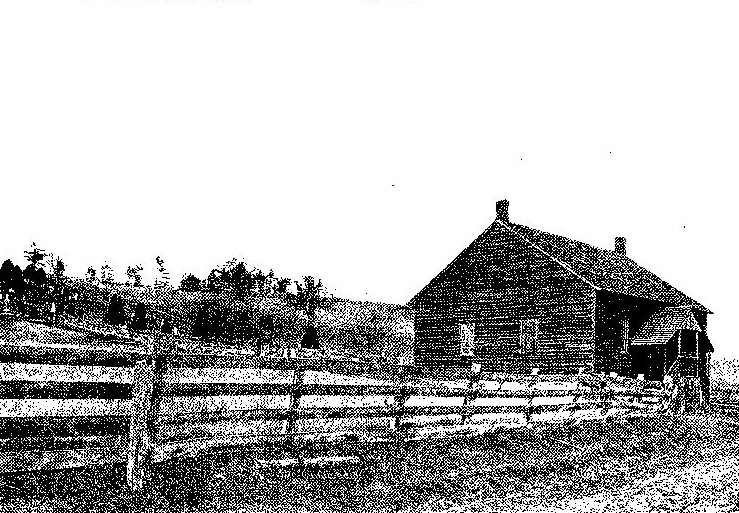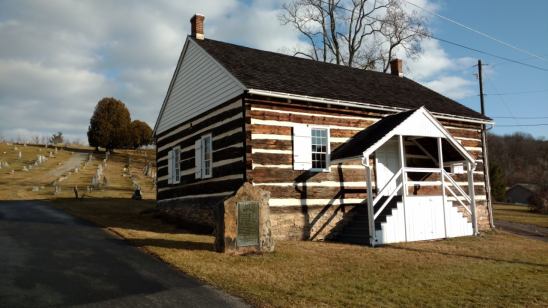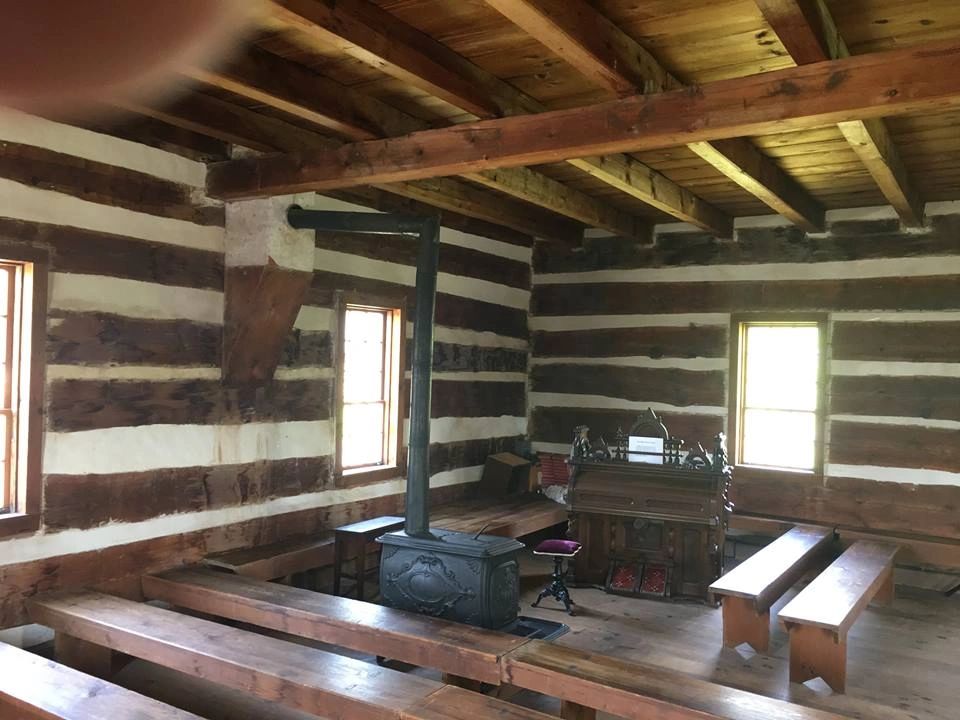
BALLS MILLS – Nearly 200 years ago a group of Baptist “Brethren” fleeing persecution in Germany purchased a plot of land near what is now the small village of Balls Mills in Lycoming County and the meeting house they built is still there today.
The Blooming Grove Meeting House, which is part of the Blooming Grove Historical Society, can be considered the focal point of “a small party of emigrants who settled together in the wilderness of Central Pennsylvania in the early part of the nineteenth century” writer Joseph McMinn said in 1901. This group of people had been “harassed and tormented until the land of their ancestors became intolerable.”
According to Greg Thomas, a member of the Blooming Grove Historical Society, this was a group of German Christians, which held to Baptist traditions, and called themselves “Brethren.”
McMinn said this group of Baptists began meeting together in 1708 and chose the name ‘Brethren” from the Bible verse Matthew 23:8 “… for one is your Master…and all ye are brethren.”
“They refused to go to war,” McMinn said 1901 book “Blooming Grove: A History of the Congregation of German Dunkers who settled in Lycoming County, Pennsylvania. “Neither did they swear the civil or any other oath before a magistrate or in a court of justice. They were noted for modesty of apparel, plainness of speech, and distinguished hospitality.” They had been compared to Mennonites, priests and Quakers.
At the time, Germany was involved with a war with Napoleon Bonaparte.
“The authorities in Wurteinburg (in southwest Germany) continued to be imperious and cruel to the non-conformists,” McMinn wrote. Many of them had been imprisoned for “refusing to bear arms in the levies being made for Napoleon,” McMinn said. About 1804 with the “prisons being overcrowded,” the Brethren members were “released then upon promising to leave the country.”
Because Pennsylvania had a tradition of being a safe haven for the religiously persecuted thanks to William Penn in the 1690s, these German Baptists found their way to Central Pennsylvania in 1805. Thomas said along the journey they met a land speculator who sold them a tract of land in what is now Lycoming County.
“When these Baptists came to this area, they saw the dogwoods blooming, and they thought it reminded them of Germany, so they settled here,” Thomas said. “They called it Blooming Grove.”
By 1828, they had built the Meeting House, Thomas said, out of the white pines that were plentiful nearby. The structure rests on a stone foundation, with long white pine logs held together by white mortar. The simple roof, which had been made of cedar tiles, sloped down in the same direction as the hill behind it.
“Since 1828, only two logs here have had to be replaced,” Thomas said as he commented on the craftsmanship of the building. He said they built the structure to be 30 feet wide, 40 feet long and 12 feet high.
He said as a reflection of their simple style, the interior of the church is similar to a Quaker meeting house. There are two metal stoves on either side of a rectangular room. On each side were backless benches and the women would go up one set of stairs and the men would go up another. The women would sit on one side and the men would sit on the other.
“The elderly and pregnant women were allowed to sit on the benches next to the walls so they could lean back,” Thomas said.
McMinn explained that the “long plain benches without back supports testify to a race, at once vigorous and robust, and who scorned any show of comfort or ease, such as we find required in modern churches.”
But like Thomas said, young mothers were offered extra help. McMinn wrote that it “might be said in this connection that mothers with nursing infants – would occupy the seats next the wall which offered them a rest and when the small children fell asleep they were often laid away under the seats.”
Thomas said a traditional service began in the afternoon. Three elders would sit at a table in the center of the room. Each of the men would do a full sermon with a service lasting up to three to four hours.
“Each man would speak as the spirit moved,” Thomas said.
Those meeting services were needed for encouragement. As McMinn explained that “for many years the winters were tedious and tiresome.”
“The streams would freeze to the bottom, the snow would fall to a depth of several feet, when hunger and thirst would drive the wild beasts ravening for food, to capture or terrify their domestic animals, or even themselves. The panthers (mountain lions) would scream from the tree tops, the wolves would howl around their cabins at night, and in day time carry off the sheep and frighten the children from the fields,” McMinn said.
Thomas related a story about how one of these wild cats, seeking food, attempted to get in a house.
“There was a major snowstorm and one of the panthers made its way up on the roof and tried to get down the chimney,” Thomas said. “All this person could do was keep feeding the fire and keep the panther away.”
Bears would also “catch the young pigs and upset the beescaps for the honey. The foxes, owls, hawks, crows,minks, weasels and skunks would ravage their poultry yards.” These German Baptists were “driven to the use of firearms, which they had religiously opposed” or they would end up “destroyed by the denizens of the forest.”
However, despite it all, they would open their homes to strangers and people in need. Thomas said that the Meeting House was used as a refuge to hide runaway slaves form the South. The fugitives would hide in the upper portion of the building which was big enough for a person to stand up in.
“There was a hidden door to walk upstairs and the boards were packed so tightly, very little dirt fell if people were up there,” Thomas said. “The Meeting House was located not so far from Freedom Road, it was just a hop, skip and a jump to New York and then on to Canada. When one of the German Baptists first came to America, they encountered a freed slave and said that though they different skin colors they were brothers in Christ.”
Today, Thomas said the members of the Blooming Grove Historical Society are proud to keep that heritage alive. The society was founded in the 1920s and the members of the Meeting House congregation began to disperse in the 1930s.
“In 1928, the Meeting House was put on the state historic site to help preserve it,” Thomas said. Today the historical society boasts over 300 members nationwide. The museum, which is located next to the Meeting House on Dunkard Church Road, has exhibits from the settlers and residents.
Currently, the museum has no set hours, persons interested can call and schedule a visit.
“We are thrilled by our legacy,” Thomas said. “We are glad to share it.”
*Joseph McMinn’s quotes were taken from his 1901 book “Blooming Grove: A History of the Congregation of German Dunkers who settled in Lycoming County, Pennsylvania.”







